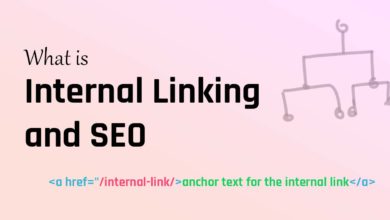What happens if all the posts, pages, categories, pagination index to the search engine? You wrote a total of 20 pages, and search engines index more than 200 pages. Is that safe for the SEO of a website? Let’s understand?

Search Engine Optimization is essential for page ranking, but what pages to rank?
Is this question often stuck in your mind that which pages should allow for index and which for noindex to improve page rank? To understand all this, read this article till the end.
For this, you’ve to understand these things that google needs for ranking.
- Genuine, clean, and error-free content.
- The language used must be very simple in the case of English, don’t use tough words so that everyone can read.
- Index one item only one time that means don’t create junk or duplicate content.
- Robots.txt permission
- Etc.
These are some basic points that you should keep in mind. Here we’re discussing which pages should index to search engines.
It would be best if you focused on indexing of
- Homepage
- Static Pages
- Post pages
1. Homepage must be indexed as search engine usually enters through this entry point. A crawling bot may enter from any other entry point, but the homepage is most valuable other than all.
2. Static Pages link the website to various posts and other pages of your website. Please note that we’re discussing static pages, not the categories or tag pages, as they (category, archive, or tag pages) contain the same items as posts.
3. Posts. are most important to index. Posts are original content written/created by you. That should be index and interlinked with other content on the website.
What to be noindex or When to use noindex
It’s also an important question that what to be noindex. Here is a list
- Category pages
- Tags pages
- Archive pages
- Error pages
- Attached Media files of the website.
Category, tags, and archive pages contain the same h2 tags with paragraphs <p> tags inside a post linked with it. The search engine will count it in the duplicate content. To avoid this, you can use meta tag robots noindex, follow. That allows search engine bots to crawl websites thoroughly.
When to noindex: You can use noindex when your page or post duplicates any other pages or posts. For example, you index a category page name “SEO” and another category page, “SEO Tips”. Then these both pages contain 8 common feed posts. The search engine will count this as duplicate content due to that 8 common feed posts. That’s why we use noindex for category sections.
Similarly, you can noindex archive, tags, and error pages. But now you’ve to interlink all the articles with one other for better SEO results.
Everyone wants organic traffic, and they optimize their site with many SEO tools. Like Yoast SEO, Rank Math, All in one SEO, and many more according to the platform they are using.
You can use robots meta tags and robots.txt to crawl and index and noindex content in the Blogger blog.
I hope you like this article. In case of any doubt, query, or feedback, feel free to ask in the comment section provided below.




Passando por problemas de indexação Amp meu Blog aparece muitos erros e fica sempre na segunda págiando google
Are you trying to grow your company without knowing where to start?
Take a look at this best email finder to generate leads that could help you thrive.
https://minelead.io/finder/